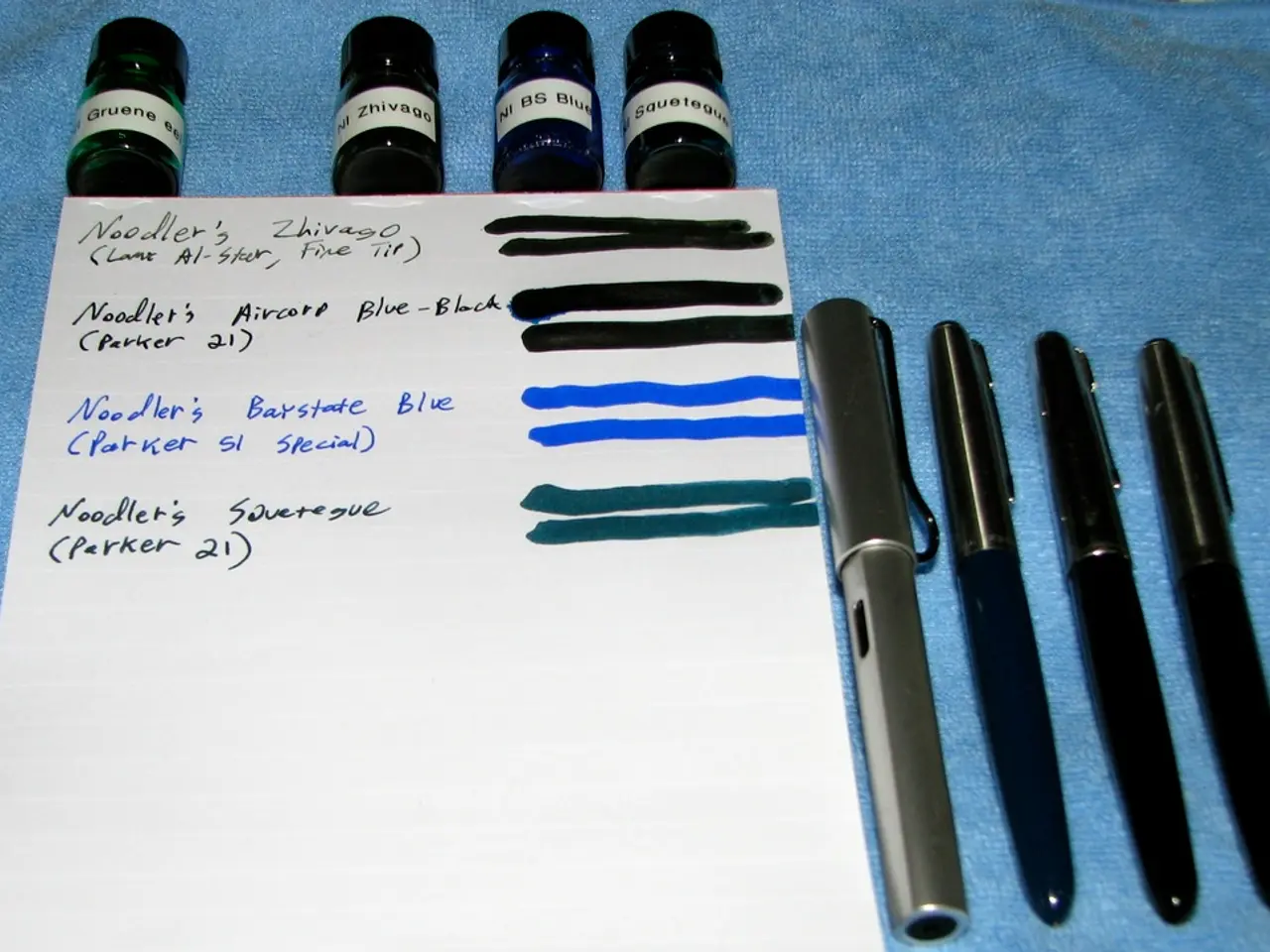Investigating Ink Toxicity: What are the Symptoms of Ink Poisoning?
Ink poisoning is a rare occurrence, but it can be serious if large amounts are ingested. Understanding the causes, symptoms, and prevention methods is crucial for ensuring a safe environment, especially in households with young children.
To prevent ink poisoning, it's essential to educate ourselves about ink products, practice safe storage, and use non-toxic options. Here are some key points to keep in mind:
- Store ink products securely: Designate specific areas in your home for storing ink products, such as high shelves or locked cabinets that are out of reach of young children. Regularly review these storage areas to ensure they remain secured and organized.
- Familiarize yourself with safe brands: Research brands known for producing safe, non-toxic ink products. This knowledge will help you make informed choices while shopping.
- Educate others in the household: Make sure everyone, including caregivers, is aware of safe storage practices and the importance of keeping ink products out of reach.
- Check safety certifications: Always examine packaging for safety certifications, such as ASTM D-4236 or AP (Approved Product), which indicate that the ink is non-toxic and safe for children.
- Cap everything after use: Reinforce the habit of capping markers and pens immediately after use to prevent leaks or accidental ingestion.
In case of ink poisoning, prompt first aid and medical consultation are key to effective treatment. Here's what to do:
- Skin contact: Wash affected skin with soap and water. Avoid harsh chemicals used to remove the stain, as they can irritate the skin more.
- Eye exposure: Immediately rinse eyes with lukewarm water for about 15 minutes to reduce irritation and remove ink.
- Ingestion: Do not induce vomiting. Giving small sips of water can help with mild nausea. Seek medical attention if a large quantity is ingested or severe symptoms appear.
- General advice: In any suspected poisoning, especially in children, call poison control or emergency services immediately. In the US, the Poison Control Center number is 1-800-222-1222.
In summary, prolonged skin contact with ink can potentially lead to skin irritation or allergic reactions. Accidental ingestion of ink is a common cause of ink poisoning, particularly in children who may chew on pens or markers. Ink poisoning can manifest differently in adults and children, with adults exhibiting severe gastrointestinal distress and neurological effects, while children may show irritability, behavioral changes, or fever.
Prevention strategies include identifying ink products, discussing risks, showing real-life examples, creating a safe environment, and engaging with questions. Consider using clear containers or bins to store ink products, making it easier to identify contents and remind everyone of their storage purpose. Prioritize non-toxic options when shopping for ink products, especially for young users.
In environments where ink products are prevalent, always examine packaging for safety certifications. Medical professionals may administer activated charcoal to prevent absorption of toxins in the gastrointestinal tract, in the case of ink poisoning. Involve children in the decision-making process when choosing new ink products to educate them about the importance of using safe materials.
Before professional help arrives, remove ink sources and encourage the affected person to drink water. If you suspect ink poisoning, immediately assess the situation and call emergency services if severe symptoms arise or if a substantial amount of ink has been ingested.
- In the realm of personal growth and education-and-self-development, understanding the risks of ink poisoning plays a crucial role, especially when it comes to households with young children.
- For maintaining mental-health and overall health-and-wellness, it's essential to prioritize safe storage of ink products and use non-toxic options, such as CBD-infused skincare or therapies-and-treatments, to minimize potential harm.
- In addition to safe storage practices, it's important to engage in learning about different ink products and the health consequences of ink poisoning, fostering an environment that promotes personal-growth and informed decision-making.
- By familiarizing oneself with safety certifications, like ASTM D-4236 or AP, individuals can make confident choices when purchasing ink products, ensuring the protection of their own and their family's mental-health and health-and-wellness.
- To raise awareness about the dangers of ink poisoning and promote health-and-wellness, consider incorporating educational materials about safe ink choices and storage methods into skin-care or mental-health workshops or discussions.




